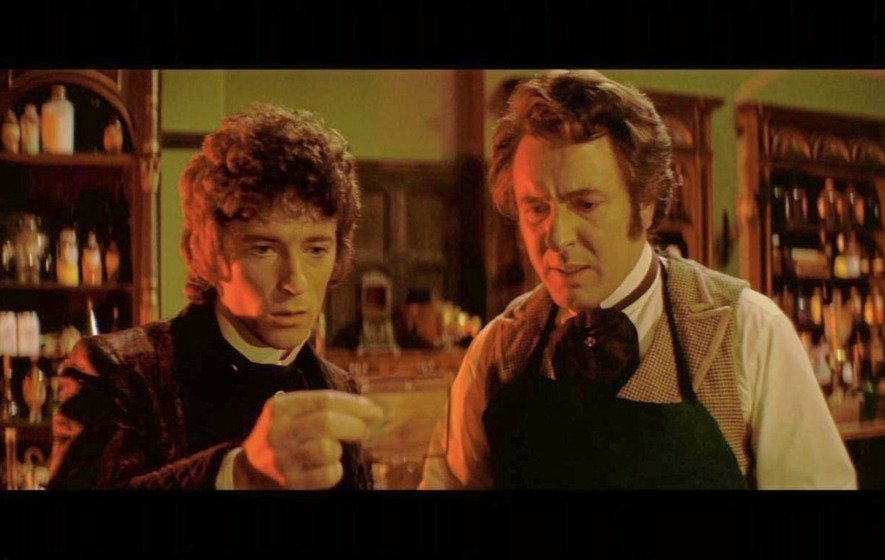
The Asphyx (1973)
"An accidental electrocution here, a premature burial there, here a death, there a death, everywhere a violent death"
A joltingly weird, just-come-in-from-the-pub “what am I watching?” oddity, The Asphyx mixes together some strange ideas about man’s quest for everlasting life with a bit of Hammery gothicness and a touch of hamster abuse, and comes out as a film of two halves – quite literally, really, with its contemporary (ie. 1970s) bookend scenes which add very little to the overall story.
The whole ridiculous farrago begins in present day London, when a tramp staggers out into the road and gets hit by a car. So much so good, you say. "That’ll do me, 10 minutes in and we’ve already had a bloke wearing a papier mache mask and carrying a hamster get hit by a car – it might not be Shakespeare, but we’re getting treated to some funky 70s cars and a typically grim-looking city centre, and that’s all I require from by vintage Brit horrors, thank you very much."
But at this point things take a turn for the weird, as we are joltingly transferred back in time a century or so, to an age where there wasn’t a Rover P6 in sight – just a load of boring old horse-and-carriages. Back in Victorian times, scientist Sir Hugo Cummings (the wonderfully OTT Robert Stephens, enjoying a slice of scenery with his ham) discovers that he can trap the soul of an animal at the point of death, which (with the astonishing lack of logic and scientific explanation which often accompanies these things) apparently means that a person could technically live forever, while their soul is trapped.
He finds that the best way of doing this is by using a specially adapted camera, with which he can imprison a soul (or, as he calls it, an “Asphyx”). Of course, there’s no end of people queueing up to tell him what a nutcase he is, including his until-now loyal brother Giles (Robert Powell, giving his best “slightly puzzled” face throughout).
In the best tradition of rampantly mistaken scientists, Sir Hugo ignores all sage advice and ploughs on with his experiments, with an accidental electrocution here, a premature burial there, here a death, there a death, everywhere a violent death, until there’s just him and his trusty indestructible hamster left. One hundred years later, and hammy the hamster is still going strong, although hammy the actor is looking more than slightly the worse for wear, and despite being about 150 years old, he still hasn’t quite grasped his Green Cross Code.
The Asphyx is, as many Gothic horrors are when watched with modern eyes, painfully slow at times, but an enforced matchsticks-propping-up-the-eyelids watching does pay some dividends. The Asphyx creature itself, although basically a glove puppet, is quite eerily unsettling, and Stephens is an actor who’s acting as if his very life depended on it, coming across like Alan Rickman might if he’d just eaten a blue lolly loaded with e-numbers.
In its favour, the film looks gorgeous, and has a number of interesting set-pieces and a lot for the anally-retentive to guffaw at (hang on a minute – hasn’t he just invented the movie camera? Never mind trying to trap mankind’s immortal soul, Hugo, get yourself down to the patents office!)
Not a classic, by any means, but a good example of fag-end 70s gothic with a remarkable turn from its leading man.
